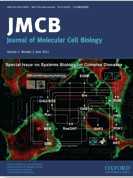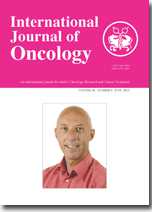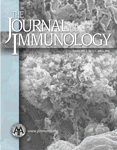J Mol Cell Biol:徐鹰等发现低氧可以驱动癌症生长
2012-07-03 上海生命科学研究院 上海生命科学研究院
Journal of Molecular Cell Biology(《分子细胞生物学报》)2012年第3期“复杂疾病的系统生物学研究”专辑中发表了一篇美国佐治亚大学生物化学与分子生物学系徐鹰教授关于“Hypoxia and miscoupling between reduced energy efficiency and signaling to cell proliferation drive
Journal of Molecular Cell Biology(《分子细胞生物学报》)2012年第3期“复杂疾病的系统生物学研究”专辑中发表了一篇美国佐治亚大学生物化学与分子生物学系徐鹰教授关于“Hypoxia and miscoupling between reduced energy efficiency and signaling to cell proliferation drive cancer to grow increasingly faster” 的论文,报道了细胞内低氧引起能量效率与控制细胞增殖的关系的失调,从而促进肿瘤的快速生长。这一假设与传统认为的“基因突变导致肿瘤生长”观点有着很大的区别。此文在线出版后,立即受到包括ScienceDaily在内的国际媒体广泛关注。
过去的研究将细胞内低氧水平看作癌症发展的促进因素之一,但并不是肿瘤生长的驱动因素。徐教授说,随机的基因突变单独无法解释全球癌症的高发病率。他又说,将数学和计算机知识应用于生物学而形成的生物信息学使研究人员可以从一种新的角度看待癌症。基因突变可能使癌细胞在竞争中优于健康细胞,但这样的话新生癌细胞生长的模式就不需要癌变前兆的出现,如原癌基因突增等常见的不良变化。“癌症治疗药物力求达到根源——在分子水平上——一个特定的突变,但往往不能根治,”徐教授说:“所以我们想基因突变可能并不是癌症的主要驱动因素。”的确,徐教授的分析发现,长期的细胞内缺氧可能是癌生长的一个关键驱动因素。
目前大多数的癌症研究希望通过药物对抗与某种特定癌症相关的基因突变,进而达到治疗癌症的目的。徐教授课题组从Stanford Microarray Database数据库下载了7种癌症(乳腺癌、肾癌、肝癌、肺癌、卵巢癌、胰腺癌及胃癌)的相关数据,通过一款软件程序分析这7种癌症中异常的基因表达模式。他们以基因HIF1A作为一个细胞氧含量的标记物,所有被实验的7种癌细胞中,HIF1A水平都有显著的升高,这表明这些癌细胞中氧含量显著的降低。
细胞内氧含量降低,导致氧化磷酸化反应的中断,而氧化磷酸化反应是细胞将食物转化为能量的一种高效途径。随着氧含量的降低,细胞切换到糖酵解途径生产能量单位,即ATP,这是一种效率非常低的能量获取方式,所以为了存活癌细胞必须努力得到更多的食物,尤其是葡萄糖。当氧含量水平下降到极限时,血管新生——即生成新血管的过程——启动了。新生血管提供新鲜的氧气,提高细胞内和肿瘤的氧含量水平,并延缓癌细胞的生长,但这都是暂时的。
“得到更多的食物后,癌细胞就会生长;这就会导致整个肿瘤实体增长而更加缺氧。反过来,能量转换效率将更加低下,从而使细胞更加饥饿,促使细胞从血液循环中获得更多的食物,形成一个恶性循环。这或许是肿瘤形成的一个关键驱动因素,”徐说。这个全新的癌细胞生长模式可能用于解释为什么很多肿瘤很快(3-6个月以内)产生耐药性。他强调了未来非常有必要通过大量的癌症实验研究来论证这一新模式。如果这一模式得以成立,研究人员的首要任务是探索防止细胞内低氧的办法,从而使肿瘤治疗的手段发生巨大改变。

doi:10.1093/jmcb/mjs017
PMC:
PMID:
Hypoxia and miscoupling between reduced energy efficiency and signaling to cell proliferation drive cancer to grow increasingly faster
Juan Cui1,†, Xizeng Mao1,†, Victor Olman1, P. J. Hastings2 and Ying Xu1,3,*
The question we address here is what drives cancer to grow in an accelerated fashion as it evolves. Various proposals have been made regarding the possible drivers of cancer growth such as driver mutations and autonomous growth signaling. While these are clearly relevant, they rely too much on specific types of genomic mutations or molecular abnormalities by chance across different cancer types, which makes the probability for cancer to occur/progress significantly lower than what we have witnessed about the current cancer occurrence rates worldwide, hence making them less probable to be the ultimate drivers of cancer growth (Loeb, 1998). We present here a model for the (accelerated) growth of a cancer based on the discovered gene-expression patterns derived from genome-scale transcriptomic data of seven solid carcinoma types, namely breast, kidney, liver, lung, ovary, pancreatic, and stomach cancers. Our data analysis clearly indicates that as a cancer advances, (i) its percentage of cells in the G0 phase of the cell cycle tends to become increasingly lower, indicating accelerated cell proliferation; (ii) when the hypoxia level goes up, the activity level of oxidative phosphorylation as the main energy (ATP) producer goes down and that of glycolysis goes up, which triggers cancer cells to accelerate the uptake of glucose from the blood circulation to make up for the lost efficiency in energy production, needed for them to stay viable; (iii) this switch in energy metabolisms leads to accelerated cell proliferation and further increased hypoxia, forming a vicious cycle of (accelerated) growth of cancer; (iv) this cycle breaks down when the new angiogenesis takes place triggered by the high hypoxia level, which decreases the hypoxia level and switches back to oxidative phosphorylation as the main energy producer and continues until the cells become too hypoxic again; and (v) the cellular hypoxia …
本网站所有内容来源注明为“梅斯医学”或“MedSci原创”的文字、图片和音视频资料,版权均属于梅斯医学所有。非经授权,任何媒体、网站或个人不得转载,授权转载时须注明来源为“梅斯医学”。其它来源的文章系转载文章,或“梅斯号”自媒体发布的文章,仅系出于传递更多信息之目的,本站仅负责审核内容合规,其内容不代表本站立场,本站不负责内容的准确性和版权。如果存在侵权、或不希望被转载的媒体或个人可与我们联系,我们将立即进行删除处理。
在此留言














#Biol#
61
#Bio#
81
#Cell#
71
#CEL#
92